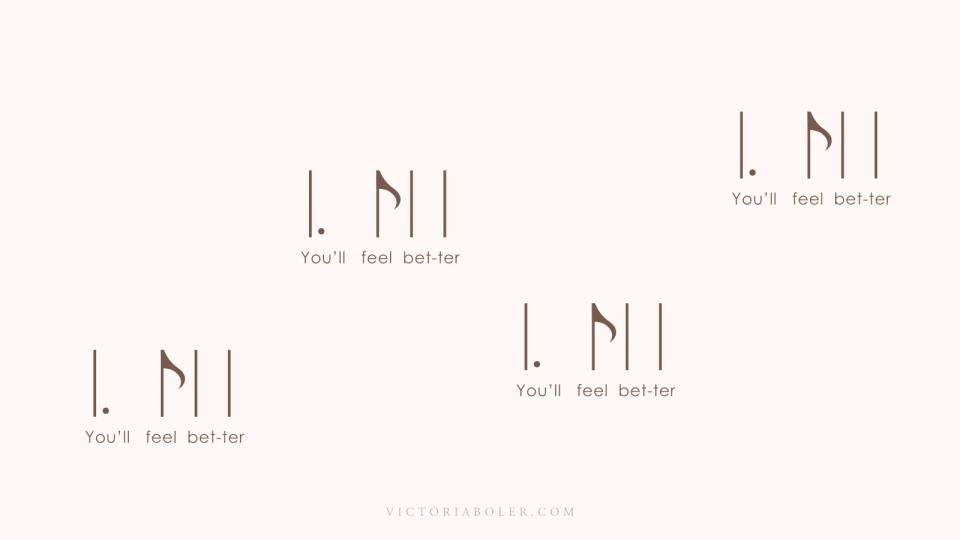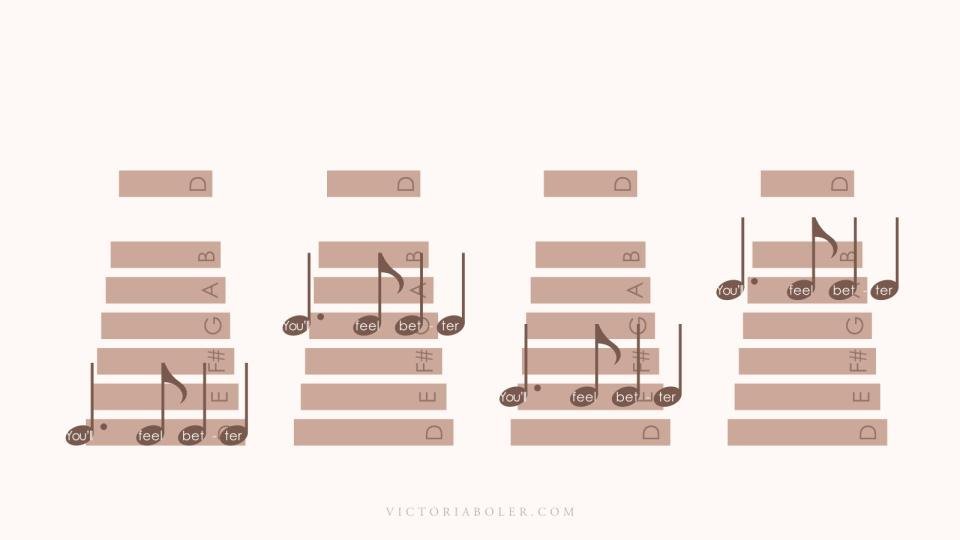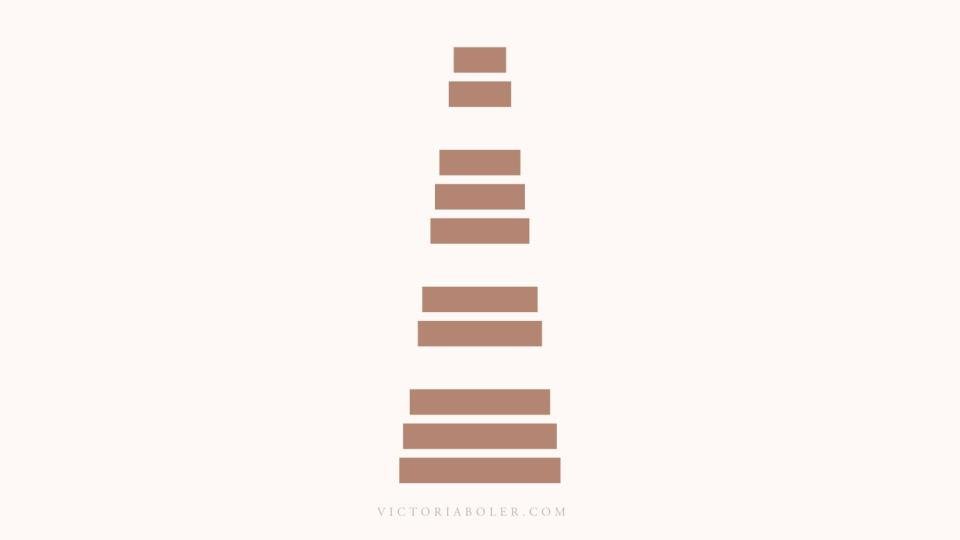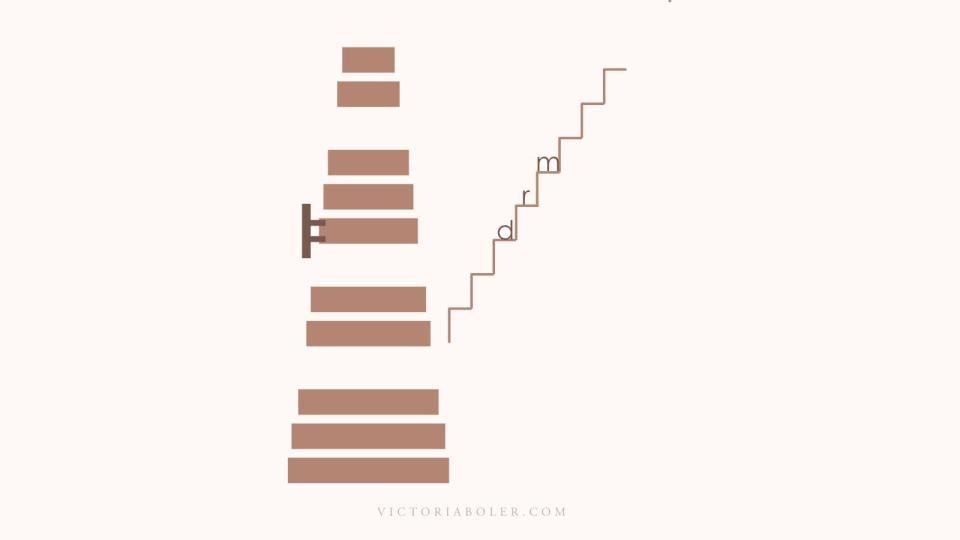Pop Songs for Upper Elementary General Music
So many of us are interested in using popular music in our teaching. However, without training in using pop music for music pedagogy, we may be unsure of how to tie the repertoire back to musical concepts. What’s the connection between our curricula and songs that are not from the folk song or Western European classical tradition? What is the role of student-suggested selections in our teaching?
Here are some ideas for using pop music in upper elementary classes. All of these ideas come from the 2021 - 2022 curriculum inside The Planning Binder.
We’ll look at a few selections for upper elementary, as well as some activities for older beginners.
Let’s jump in!
Concepts and Songs Lists
One of the biggest time-saving documents we might make at the beginning of the year is a list of songs with corresponding musical concepts. If our goals are to use more popular music in our teaching, these lists can help keep us on track.
These songs are part of a Concepts and Songs list that I made at the beginning of the year for The Planning Binder.
You can read more about concepts and songs lists with the links below:
Planning Ahead: How to Choose Repertoire for your Elementary Music Class
Resources for Creating a Grade-Level Song List (That You May Not Have Thought of Yet!)
Pop Songs and Musical Concepts for Upper Elementary:
Synco-pa: Surfin’ USA (Beach Boys)
This melody was written by Chuck Berry, and released in 1958 under the title, “Sweet Little Sixteen.” Brian Wilson re-wrote the song to the version of “Surfin’ USA” that we know today, and released it in 1963.
Aurally Identifying Synco-pa
Synco-pa happens in the background of the chorus, at the words, “inside, outside, USA.”
Students can identify if the sounds of “USA” are even or uneven (uneven). From there, they can decide which letter has the longest sound (S) and which have short sounds (U and A).
Other Learning Activities: Early Experience with Synco-pa
Before students are ready to aurally identify synco-pa, there are a number of active experiences we can curate.
When students are first starting to explore this new rhythm, we can play it on body percussion in a movement activity:
Formation:
Students stand in a circle with the recording playing.
Verses:
During the verses, the teacher claps four or eight-beat patterns that incorporate synco-pa. Students echo the patterns on body percussion of their choice.
Chorus:
During the chorus, students jump inside the circle (on the word inside), then back out to their spots (on the word outside).
At the words, “USA,” students clap the synco-pa rhythm, or they hold their hands out to the side and clap the rhythm with their neighbors’ hands on either side.
High Do: Rise Up (Andra Day)
Cassandra Monique Batie is the singer and songwriter who goes by the stage name, Andra Day. She performed this song at the presidential inauguration parade in 2021. Students love this selection!
Aurally Identifying High Do
Students can analyze the melodic direction of the chorus and aurally identify high do as a skip higher than la.
Students might also count how many times Andra sings “I’ll rise up” and identify that the first two times she sings mostly on sol. The third time she repeats the words, she moves up to high do. Students might consider why she made this musical choice and how her melody emphasizes the repetition of the words, and the message of the song.
Other Learning Activities: Conscious Use Experiences with High Do
After students have had many learning experiences with this song over several weeks, we can create an invitation to arrange partner melodies in small groups using melodic cells. These melodic cells would be used in other learning activities throughout the process in The Planning Binder, as well as this final learning activity.
In small groups (about three or four musicians) or with a partner, students arrange these fragment melodies in an elemental order. In this case we’re using aabb, abba, or aaab. These melodies will be performed as partner melodies with the chorus of the song at the end of this project.
Student groups explore different combinations of the melodic cells and decide on an order they like. After the order is chosen and practiced, students can notate their melodies on the staff.
After students have practice singing, notating, and rehearsing their melodies, they have the opportunity to share out while the rest of the class sings the main melody of the chorus.
Fa: Better When I’m Dancin’ (Meghan Trainor)
This is a great option for a warm up entrance song! Students may already know this Meghan Trainor song from The Peanuts Movie.
Aurally Identifying Fa
Students can analyze the melody of the chorus and aurally identify steps coming down from sol in the text, “we can do this together.” Students can notice the melody moves down by step from the word, “do” and that the word, “this,” is a step lower. In this class, we call the pitch a step lower than sol, fa.
We can also invite students to sing the fragment melody on solfege with hand signs, and on numbers holding up fingers.
Other Learning Activities: Conscious Use Experiences with Fa
We might add a partner melody to the song that outlines the functional harmony.
The text here repeats: “you’ll feel better, you’ll feel better…” and outlines the harmony of the song - do, fa, re, sol.
Students can sing the new partner melody on solfege with hand signs, then on numbers holding up fingers. From there, they can point to a barred instrument (placed vertically) to show the outline of the melodic contour.
This sets students up well to transfer the melody from voices to barred instruments. In partners, one student can sing the melody on solfege, numbers, or letter names while the other partner plays. Students switch jobs so both players have a chance at a barred instrument.
Songs and Concepts for Older Beginners:
Upper elementary musicians come to us at a range of formal music training. However, they all come to us with a musical background based on the music they interact with on a daily basis.
Older beginners have years of musical experience through popular music. How can we utilize their musical interests in the classroom?
Here are a few ideas:
Steady Beat vs Rhythm: We Are Family (Sister Sledge)
The sisters from Sister Sledge are from Philadelphia, Pennsylvania. Their music was especially well-known as a part of the disco era, but students will still enjoy it today! The song was written by Nile Rodgers and Bernard Edwards. Kathy Sledge was the lead singer for this song, and was 19 years old at the time of the recording.
Aurally Identifying Steady Beat
Invite students to copy your body percussion pattern as the song plays. When students accurately imitate the body percussion pattern, ask them to change something about it, while still playing at the same time as you.
Students can notice that the sounds of the body percussion change (snapping, clapping, patting, etc.), but the distance between the sounds stays the same.
Learning Activity: Early Experiences with Steady Beat
Students can create a name chain with a group of four to perform with the chorus.
Guided practice with this can be helpful. As the recording plays in the background, ask for four volunteers. The whole class speaks the names of those volunteers with a steady beat. An example might be: Joseph, Christopher, Catalina, Avery. Practice the pattern with the chorus and notice we repeat the pattern four times.
When students are ready, ask them to get into a group of four and choose an order for their names. Start the recording at the chorus and have students perform their patterns four times in a row.
When the verse begins, ask students to find a new group of four students.
Note - If there aren’t four even groups, students can partner in groups of two or three. Just be aware some names in the group will need to be repeated to complete the steady beat phrase.
Mi Re Do: I’m Good (The Mowgli’s)
This is a group is from Calabasas, California. I hadn’t heard this song until I started looking for pop music to use in the music room. As soon as I found it I was hooked.
Learning Activity: Early Experiences with Mi Re Do
Ask students to find a partner or a group of three. Play the recording and ask students to create high, medium, and low body percussion levels.
As the song plays, the teacher sings or plays short patterns of mi re do on a neutral syllable, or on a barred instrument. Students echo sing and play body percussion.
When students are ready, they can transfer their body percussion to barred instruments by looking at the pentatone layout. Where do we see high, middle, and low bars all next to each other? Lead students to identify the grouping of three bars on the instrument. Which of these three bars is high? Which is middle? Which is low?
Repeat the earlier activity with the song playing, but instead of body percussion, students echo with high, middle, and low bars on the instrument.
(In a later class students can make the connection between high middle low and mi re do.)
Student-Suggested Songs
Students can suggest music as well!
Often as teachers we see the value in using music suggested by students, but we might not always know where to start.
When students suggest songs to use in class, there are a few steps we might take to make sure the song is in alignment with our values as a member of the school community, and our values as educators. We’ll start with looking at the song, analyzing its musical content, and then implementing it in the curriculum.
Getting Started: Lyrics & Cultural Context
If you’re not already familiar with the song, a great place to start is a quick google search of the lyrics.
Each teaching situation will be unique in terms of what the school community considers to be appropriate language and subject mater. Based on our knowledge of our students’ experiences, community values, and school culture, we can choose if we’re going to use the selection or find an alternative.
It’s also a good idea to do a quick scan of the first few Google search results pages to see any movies, video games, etc. the song may be associated with. Depending on your school community, you might also look into the musical artist to see if there is any relevant recent news you should be aware of.
Musical Analysis
After looking through lyrics, we can turn our attention to the musical content of the song. For this, we’ll use our knowledge of song analysis and decisions about what songs to use with musical concepts.
Is there a repeating rhythmic or melodic pattern in the chorus we can pull from? Is there anything happening prominently in a background vocal or instrumental line that students can hear easily? Is there a chord progression students might sing?
The most convenient section of the song to analyze is often the chorus or the bridge, since those hooks are intended to be more memorable than the chorus.
Implementation
With the lyrics and subject matter looked over and the music analyzed, it’s time to add the song to the curriculum. In my opinion, the easiest place to start implementation is in a warm-up or closing activity. From there students can continue to explore the song in the daily lesson layout.
But what if a song is clean, uplifting, and interesting to students, but we don’t see a curricular connection?
This is another reason having a scope and sequence and a grade-level song list is so beneficial! If we find a song we can’t use currently, we can make a note of where it could be relevant to the curriculum later in the year.
There are so many more possibilities for using popular music in the classroom! These are a few ideas from The Planning Binder, but students will have many more ideas for using pop music creatively.










